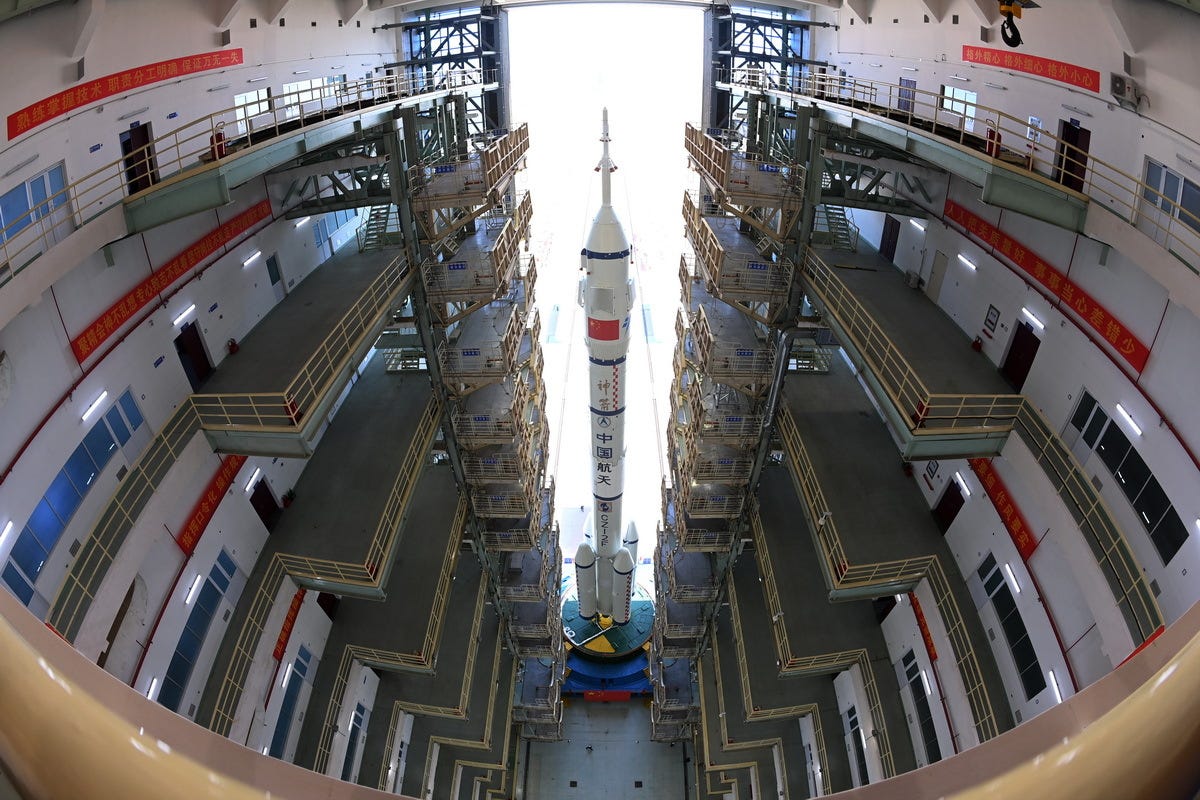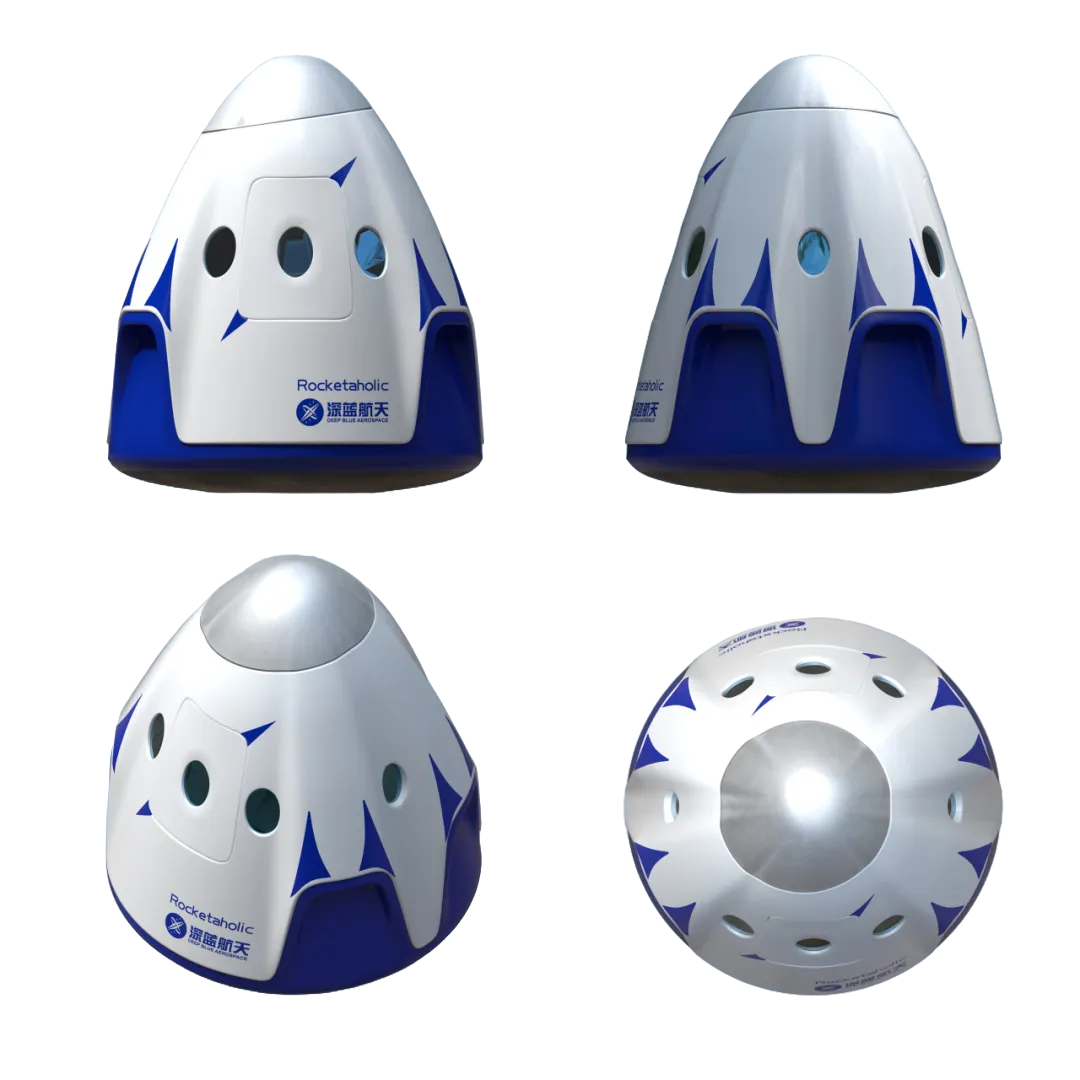Shenzhou-19 Readies for Launch as Commercial Launchers Aim for Flight & Tourism
CMSA is preparing for launch of Shenzhou-19 while commerical launch companies prepare to fly reusable rockets
Following the 75th International Astronautical Congress last week, China's space sector has kept moving towards its next human spaceflight mission along with the maiden flights of new launch vehicles. Some of these first flights have also moved much closer to launch while Shenzhou-19 is officially expected to launch before November.
Shenzhou-19 moved out for launch

On October 22nd a Long March 2F/G was rolled out to its launch pad with the Shenzhou-19 spacecraft ahead of a launch in the coming days. The launch of the Shenzhou-19 mission is currently expected before the end of October.
The three taikonauts that will fly onboard the mission, and stay aboard the Tiangong Space Station for six months, are currently unknown outside of the China Manned Space Agency. This crew will be the eighth group to board the space station and the fourteenth to conduct a crewed mission from China.
Ahead of launch in the coming weeks, the spacecraft and launch vehicle are expected to undergo final testing and rehearsals. According to the China Manned Space Agency, launch facilities are currently in good condition ahead of the mission.
Once at the Tiangong Space Station, the Shenzhou-19 will take over the Shenzhou-18 crew's duties and stay aboard the station for approximately six months. The current crew aboard the station are Ye Guangfu (叶光富), Li Cong (李聪), and Li Guangsu (李广苏), who have also recently recorded a video about life aboard the space station.
Deep Blue Aerospace unveils suborbital tourist spacecraft
Deep Blue Aerospace revealed plans for a suborbital crewed capsule on October 23rd. The crew capsule, which resembles SpaceX’s Crew Dragon, can supposedly carry six crew or 1,200 kilograms of cargo to altitudes between 100 and 150 kilometers for up to five minutes of weightlessness.
Details on the crew capsule have it at four meters tall and 3.5 meters in diameter while weighing approximately 7,900 kilograms atop of a booster. Suborbital missions with the capsule will be launched by a Nebula-1 first-stage booster with some modifications. Each crew capsule will reportedly be reused fifty times.
Testing of Deep Blue Aerospace’s crew capsule is currently planned to begin in 2026 ahead of the first crewed mission in 2027. Seats onboard the vehicle will cost 1.5 million Yuan, or 210,700 United States Dollars at the time of publication.
UPDATE: Deep Blue Aerospace has sold the available tickets for 140,356 United States Dollars.
Deep Blue Aerospace is already offering spaces for the first two missions, with a few limited-time extras. These extras are a model of Nebula-1, a commemorative ticket, and various company merchandise. Like Blue Origin does with its suborbital tourism missions, the company is requiring passengers to pass medical examinations along with training.
While revealing the crew capsule, Deep Blue Aerospace also stated that it will fly another high-altitude hop test with Nebula-1 in November as well as the first orbital flight of the vehicle in early 2025, where they will try and recover the booster. The company’s first high-altitude hop test came very close to complete success back in September.
Cosmoleap targets 2025 for maiden flight
While at the 75th International Astronautical Congress in Milan, Italy, last week, Cosmoleap spoke more about its currently unnamed reusable launch vehicle. Last week the company did not share many details about their presentation but the foundation behind the congress, the International Astronautical Federation, has recently shared a 250-word summary of the presentation.
The short summary states that Cosmoleap’s launch vehicle will utilize nine engines on the first-stage, while burning liquid oxygen and liquid methane, to generate 80 tons of thrust each, for a combined thrust of approximately 720 tons. This summary also states that the liftoff weight of Cosmoleaps launch vehicle will also be no more than 500 tons with a diameter of 4 meters.
Regarding reusability, Cosmoleap is still planning to recover its first-stage boosters with a catch tower downrange. Once recovered, Cosmoleap believes minimal refurbishment will be needed ahead of flying each booster up to twenty times.
Extensive ground testing has reportedly been underway for the past few years with a maiden flight planned in 2025, it was not stated if the vehicle will be recovered initially. After Cosmoleap revealed themselves back in July, a maiden flight was expected around 2026. Since then the company has evidently gained a lot of confidence in its system and suppliers.
Details about Cosmoleap’s launch vehicle’s engines were once again not shared but with the aggressive timeline, it’s unlikely that the company is developing its own engines. As such Jiuzhou Yunjian (九州云箭) may be supplying the company with engines. Jiuzhou Yunjian is already selling its Longyun engine, burning liquid methane and liquid oxygen to generate 70 tons of thrust, to launch companies like Space Epoch and the Shanghai Academy of Space Technology. If Cosmoleap wanted and purchased a unique variant of the Longyun engines, the engines' thrust could likely be increased as the engines can throttle up to 77 tons of thrust.
With the details shared at the congress in Italy and by the company back in July, Cosmoleap’s vehicle is now known to be 75 meters tall, 4 meters in diameter, and weighing no more than 500 tons at liftoff. The vehicle’s payload capacity is approximately 6,250 kilograms with booster recovery or 10,400 kilograms with the booster expended to a low Earth orbit altitude of 1000 kilometers.
LandSpace prepares to debut Zhuque-2E
LandSpace recently conducted a static fire with its TQ-15A engine with a new second-stage design on October 21st. This new second-stage design is reported as using a common bulkhead design along with replacing the TQ-12 engine and four TQ-11 vernier thrusters with a single TQ-15A vacuum-optimized engine.
LandSpace has been hinting at an improved Zhuque-2 vehicle since early 2024 but recently decided to call it Zhuque-2E. The company has not shared many details about the vehicle but did say the following:
"The successful success of this second-stage static ignition test marks the full validation of LandSpace's new second-stage programme for the Zhuque-2E, providing important data support and technical assurance for LandSpace to conduct the first flight test mission of the Zhuque-2E model and the regular launch mission."
If there are any problems with this translation please reach out and correct me.
No firm date has been given for the first flight of Zhuque-2E, but LandSpace did hint on Weibo that it would fly in winter, this could be in late November or December.
This section is largely based on my work for Cosmic Nxws.





